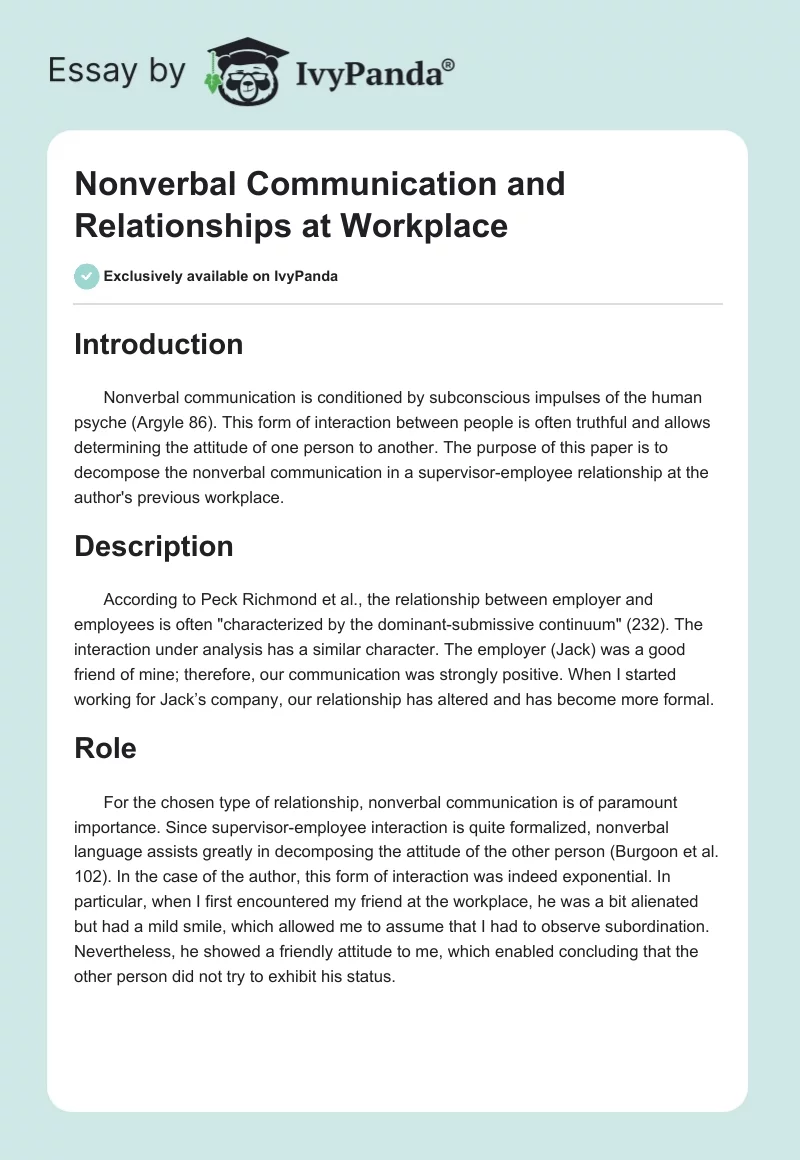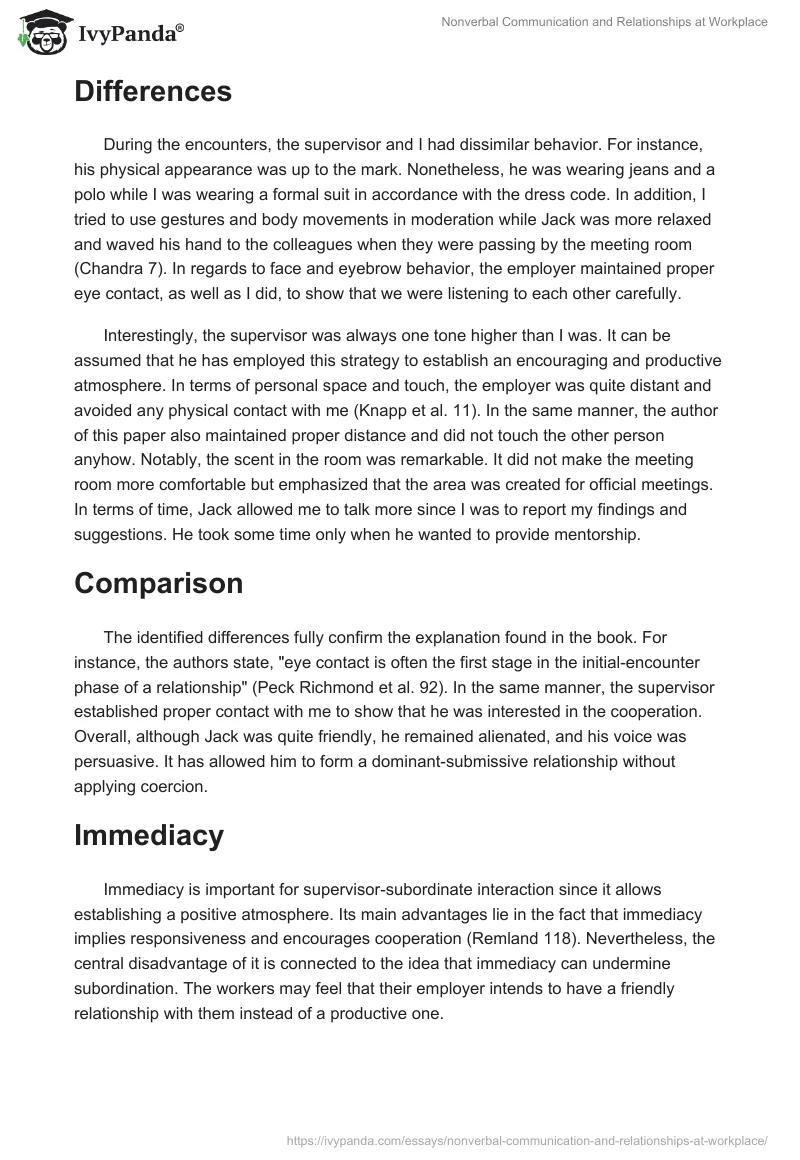Introduction
Nonverbal communication is conditioned by subconscious impulses of the human psyche (Argyle 86). This form of interaction between people is often truthful and allows determining the attitude of one person to another. The purpose of this paper is to decompose the nonverbal communication in a supervisor-employee relationship at the author’s previous workplace.
Description
According to Peck Richmond et al., the relationship between employer and employees is often “characterized by the dominant-submissive continuum” (232). The interaction under analysis has a similar character. The employer (Jack) was a good friend of mine; therefore, our communication was strongly positive. When I started working for Jack’s company, our relationship has altered and has become more formal.
Role
For the chosen type of relationship, nonverbal communication is of paramount importance. Since supervisor-employee interaction is quite formalized, nonverbal language assists greatly in decomposing the attitude of the other person (Burgoon et al. 102). In the case of the author, this form of interaction was indeed exponential. In particular, when I first encountered my friend at the workplace, he was a bit alienated but had a mild smile, which allowed me to assume that I had to observe subordination. Nevertheless, he showed a friendly attitude to me, which enabled concluding that the other person did not try to exhibit his status.
Differences
During the encounters, the supervisor and I had dissimilar behavior. For instance, his physical appearance was up to the mark. Nonetheless, he was wearing jeans and a polo while I was wearing a formal suit in accordance with the dress code. In addition, I tried to use gestures and body movements in moderation while Jack was more relaxed and waved his hand to the colleagues when they were passing by the meeting room (Chandra 7). In regards to face and eyebrow behavior, the employer maintained proper eye contact, as well as I did, to show that we were listening to each other carefully.
Interestingly, the supervisor was always one tone higher than I was. It can be assumed that he has employed this strategy to establish an encouraging and productive atmosphere. In terms of personal space and touch, the employer was quite distant and avoided any physical contact with me (Knapp et al. 11). In the same manner, the author of this paper also maintained proper distance and did not touch the other person anyhow. Notably, the scent in the room was remarkable. It did not make the meeting room more comfortable but emphasized that the area was created for official meetings. In terms of time, Jack allowed me to talk more since I was to report my findings and suggestions. He took some time only when he wanted to provide mentorship.
Comparison
The identified differences fully confirm the explanation found in the book. For instance, the authors state, “eye contact is often the first stage in the initial-encounter phase of a relationship” (Peck Richmond et al. 92). In the same manner, the supervisor established proper contact with me to show that he was interested in the cooperation. Overall, although Jack was quite friendly, he remained alienated, and his voice was persuasive. It has allowed him to form a dominant-submissive relationship without applying coercion.
Immediacy
Immediacy is important for supervisor-subordinate interaction since it allows establishing a positive atmosphere. Its main advantages lie in the fact that immediacy implies responsiveness and encourages cooperation (Remland 118). Nevertheless, the central disadvantage of it is connected to the idea that immediacy can undermine subordination. The workers may feel that their employer intends to have a friendly relationship with them instead of a productive one.
Conclusion
Thus, it can be concluded that nonverbal communication is a crucial part of the supervisor-employee relationship. It helps both the employer and the subordinate to decompose the thoughts of each other. Nevertheless, supervisors need to apply nonverbal techniques skillfully to avoid misinterpretations in their workers.
Works Cited
Argyle, Michael. Bodily Communication. 2nd ed., Routledge, 2013.
Burgoon, Judee K., et al. Nonverbal Communication. Routledge, 2016.
Chandra, Rittik. Business Communication. BookRix, 2013.
Knapp, Mark L., et al. Nonverbal Communication in Human Interaction. 8th ed., Cengage Learning, 2013.
Peck Richmond, Virginia, et al. Nonverbal Behavior in Interpersonal Relations. 7th ed., Allyn & Bacon, 2011.
Remland, Martin S. Nonverbal Communication in Everyday Life. 4th ed., SAGE Publications, 2016.


